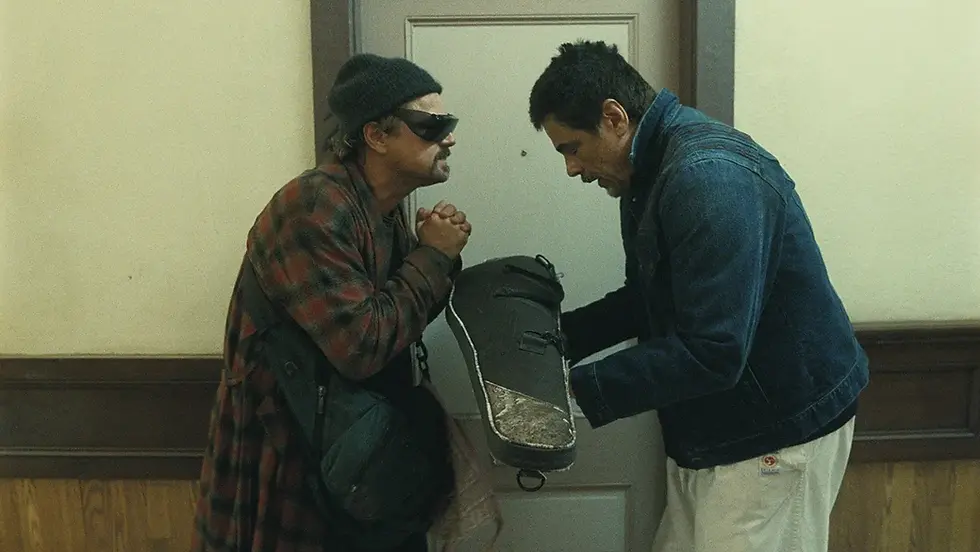Languishing Poets and Longing in Temples of Cinema
- John Bucher, PhD

- Sep 18, 2022
- 4 min read

Entering a movie theater is a sacred experience for me. My only routine public confrontations are with those that ignore the warnings about respecting the sacredness of the experience. Living in Los Angeles, I have the privilege of visiting classic theatrical palaces that more closely resemble ancient temples than contemporary corporate big box retail venues, which seem to be the reigning aesthetic at modern multiplexes.
These temples of cinema are relics of a bygone era when patrons dressed in their finest clothes to see films. There was a respect for filmic art that sometimes feels lost today. Audiences came with an expectation of being moved—yes, emotionally, but also in an imaginative sense where new philosophical and psychological landscapes magically appeared on a screen so large that it overwhelmed all logic and reason, leaving the viewer to think about and explore the mystic and transcendent possibilities they’ve just seen. There are theatrical ceremonial sacraments that remain from the early days of the moving picture shows. We still buy our ritual corn and wine, now in the form of popcorn and Coke, before entering the temple. We still dim the lights, creating a subtle altered state. And, most importantly, we still tell stories.
Moviegoers in the early days of cinema didn’t have to be reminded not to treat the theater as if it were their living room. The aesthetics of these cinematic palaces demanded respect and communicated the unspoken sacredness of the space. The stories on screen sometimes resembled real life, but more importantly, they offered the possibilities of what could be. Even the events of the everyday world seemed to foster a larger connection to the transcendent when amplified onto that giant screen. From cave paintings to the pyramids, image has long been a cultural bearer of myth. In his book Creative Mythology, Joseph Campbell says, “…the myth as the revelatory factor by which the incidents of the daylight world are discovered linked to that ground which is the ground of all and gives to everything its life” (373). Another way we might consider what Campbell says here is that myths offer revelation when we observe how divine light shines through everyday events. In the darkness of the theater, which once upon a time was called a dream palace, light passes through single images marked in time, which move at a rate so quickly that we are unable to perceive the still moments, creating the motion of something revelatory on the screen before us. Going to the movies can still convey that religious experience, that link to the ground of all, with the proper intentions.
I had such an experience recently in a dim theater watching George Miller’s film, Three Thousand Years of Longing. Miller has been vocal about the impact that Joseph Campbell has had on his work and particularly this project. It should be no surprise then that Three Thousand Years is his most explicit mythological exploration to date. Based on The Djinn in the Nightingale’s Eye, a 1994 collection of five mythical short stories by British novelist, A.S. Byatt, the film follows a narratologist (an imagined female Joseph Campbell-like figure), named Alithea Binnie, her encounter with the mythological Djinn, and the journey that the djinn made over three thousand years before coming to grant Alithea three wishes. As a quick point of reference, a djinn is a spirit figure from pre-Islamic Arabian mythology that is sometimes portrayed as a genie. The djinn has had a long history in myth, from more recent tales of Aladdin, to Charles Perralt’s fairy tale The Three Ridiculous Wishes, to One Thousand and One Nights, and long before that in Mesopotamian and Persian literature and oral traditions. The djinn’s story that unfolds over three thousand years is a love story. It is also a story about our love of story and why story has become so central to our understanding of mythic ideas.
A thoughtful examination of the film would require many more words than I am afforded here, and spoil those gripping moments that make Miller’s work exceptional. However, it would spoil nothing to suggest that metaphors for the current motifs in our world abound. Even the landscapes throughout the story speak, telling us of a dying world, a post-heroic world. In Creative Mythology, Campbell speaks of such Waste Lands saying,
What, then, is the Waste Land? It is the land where myth is patterned by authority, not emergent from life; where there is no poet’s eye to see, no adventure to be lived, where all is set for all and forever: Utopia! Again, it is the land where poets languish and priestly spirits thrive, whose task it is only to repeat, enforce, and elucidate cliches. (373)
The Waste Lands in Three Thousand Years span real and speculative history, but are not unlike our own. They are patterned by authority, not organically emergent from life. They repeat, enforce, and elucidate cliches; these Waste Lands heighten the importance of our cinematic experiences. In our dream palaces, we can imagine a world beyond cliches. We can imagine a world of face-to-face encounters with a divine djinn. We can imagine a world where even when surrounded by darkness and the occasional popcorn-chomping loudmouth, a light suddenly appears, cutting a hole in the darkness, stretching across time and space, and projects an image before us larger than anything we’ve seen before. An image where the Waste Land is renewed, and the poets no longer languish.

%20BB.png)


